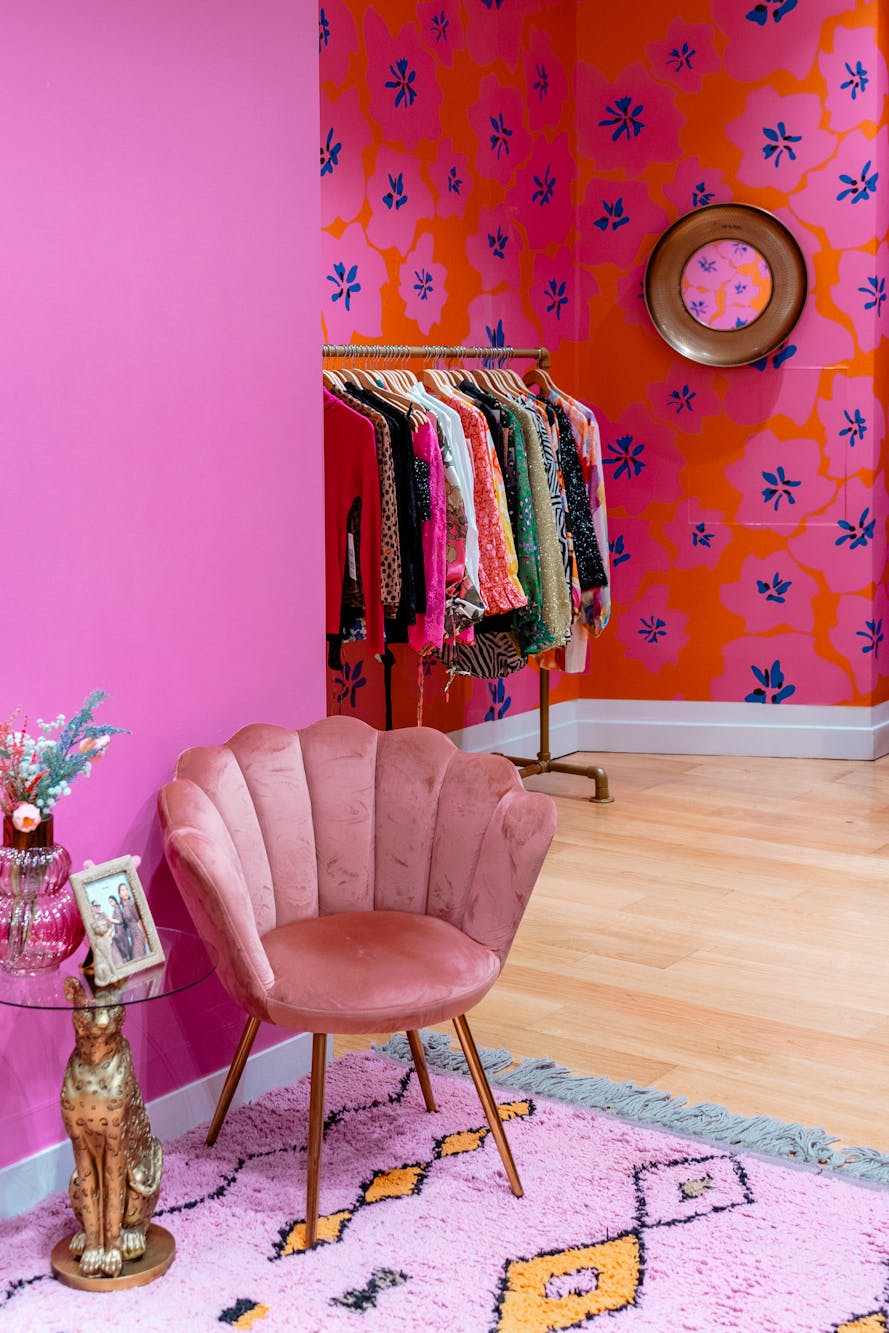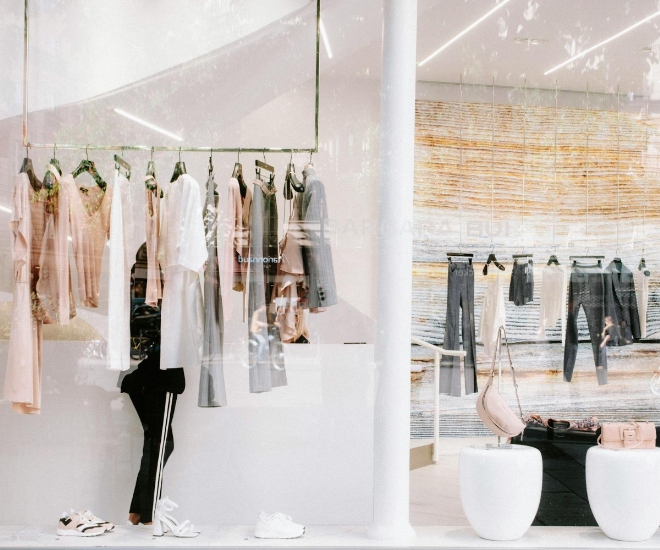
Step into a well-crafted flagship store, and you’ll immediately sense what the brand is all about. Not from a poster or a slogan, but from the light, the acoustics, and even the feel of the door handle you’ve just touched. Long before a word is spoken or a product picked up, the environment has already made its impression.
Luxury retail has never been just about what’s on the shelf. More than ever, the store is being treated as a living embodiment of a brand’s DNA — a built biography of its values, vision, and voice. Design, in this context, is not merely about visual appeal; it’s about emotional translation.

From Shelf to Statement
Years ago, a flagship store was often a larger space with an expanded product offering. Bigger windows, brighter lights, and perhaps a spiral staircase if the budget allowed. Today, it’s where brands go to express themselves—boldly, quietly, subtly, or dramatically. These spaces are not just for selling. They’re performing. They are immersive environments where brand narratives are revealed layer by layer.
Interior design is central to that performance. Every surface, scent, and spatial choice is curated to ensure the brand is remembered in a particular way. An austere store with subdued colours and open space communicates one message. A warm, wood-panelled interior with soft lighting and jazz murmuring in the background suggests another entirely.

The Language of Materials
Materials can speak volumes without uttering a word, and glass suggests modernity and transparency. Smooth stone and brass hint at heritage and permanence. Matte black and exposed concrete deliver a confident, contemporary tone.
This is entirely intentional. Designers increasingly treat materials as a kind of sensory language that echoes a brand’s personality. Sometimes, the same materials used in a product are woven into the store itself—think athletic brands using mesh or rubber flooring. In other cases, designers rely on contrast to introduce a sense of intrigue or timelessness.
Details now matter more than ever. Consider lighting, for example. Where harsh fluorescents once defined the retail experience, today’s luxury brands favour warmer glows, architectural spotlights, and custom-built diffused lighting that exudes calm and control. It’s all designed to encourage the customer to linger. To breathe. To feel welcome, but distinctly aware that they’re in an exceptional space.

Space as Story
The most compelling store designs begin with a story, not in a gimmicky or overly thematic way, but through a quiet commitment to authenticity. By starting with who the brand is at its core and allowing that essence to influence every design decision, the result is a space that feels not only beautiful but entirely right.
Consider Hermès. Its boutiques around the world vary in shape, colour palette, and layout. And yet, the common thread — elegance, warmth, artisanal detail — signals a company secure in its identity.
For newer brands, the flagship store often acts as their first introduction to the world. Without historical cues to fall back on, the store becomes their purest form of self-expression. The stakes are undoubtedly higher, but the opportunity is immense. A thoughtfully designed space can convey what an advertising campaign never could: feeling.
The Designers’ Role
Subtlety, it turns out, requires tremendous effort. Loud, showy design tends to deliver an obvious message. But quiet spaces — the ones that feel like private galleries or artful lounges—rely on restraint and deliberate minimalism.
Designers working with luxury brands today are less focused on visual theatrics and more concerned with how things feel. That might mean decluttering layouts, softening colour schemes, or refining tactile elements. Handles, lighting dimmers, scent diffusers — these small touches become part of the story.
And sometimes, it’s the absence of distraction that leaves the strongest impression. Restraint offers room for imagination. That, in itself, sets luxury apart from mass retail. It isn’t about trying too hard. It’s about providing a rare sense of calm, focus, and elegance.

Merging Shopping with Living
It’s no coincidence that many luxury stores now resemble beautifully appointed homes. This shift isn’t just about comfort — it’s about reframing how products are perceived. When a shop looks and feels like a private residence, its offerings feel less like merchandise and more like artefacts of a particular lifestyle.
Think soft furnishings, hardwood floors, artfully positioned lighting, curated music, and a bespoke scent profile. These elements create a connection. They also invite interior design principles into retail in a way that’s more fluid than ever before.
It’s within these choices that hardware, lighting, and fixtures come into sharp focus. Detail-rich materials and hardware from manufacturers such as Residence Supply offer these brands tactile ways to communicate their ethos. Rather than relying on mass-produced fittings, these pieces act like the finishing touches of a tailored suit, chosen with purpose, contributing to a cohesive narrative.

Identity Without Logos
What’s particularly fascinating is how many luxury brands are stepping away from overt logo usage. In many cases, the store itself becomes the signature. It may seem like a bold move, but it’s one that demonstrates quiet confidence. It says: “You’ll know who we are by how this space makes you feel.”
This makes every design choice — every curve, texture and spatial pause — more meaningful. The soft turn of a staircase, the gentle resistance of a polished handle, the serenity of an acoustically tuned fitting room. These are the details that create memory. And it’s memory, more than marketing, that builds loyalty.
Less Store, More Experience
Retail as experience has grown up. We’ve moved beyond selfie walls and theatrical installations. Today, the experience is more refined — and significantly more powerful. It’s about immersing a guest in the brand’s world for just long enough that they don’t want to leave.
Flagship stores aren’t designed to drive sheer volume. They’re designed to leave a mark. When everything — light, air, surfaces, and silence — feels in harmony with the brand’s core, the result is more than a transaction.
Because in luxury retail, the most meaningful thing a customer may take away isn’t always something in a bag. Sometimes, it’s a feeling they carry long after the door closes behind them.
For more on the latest in interior decor reads, click here.

